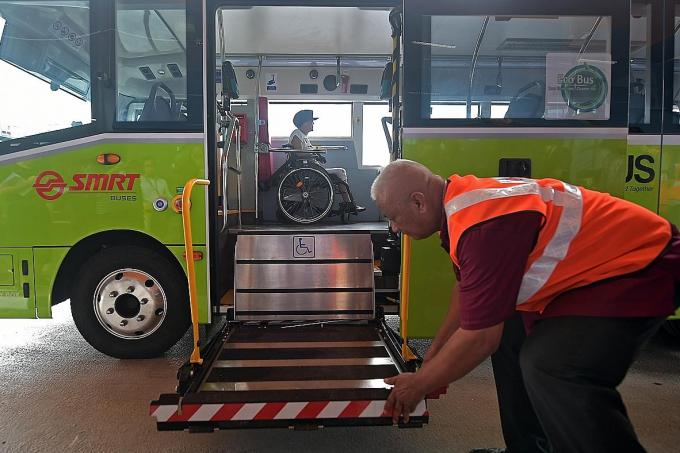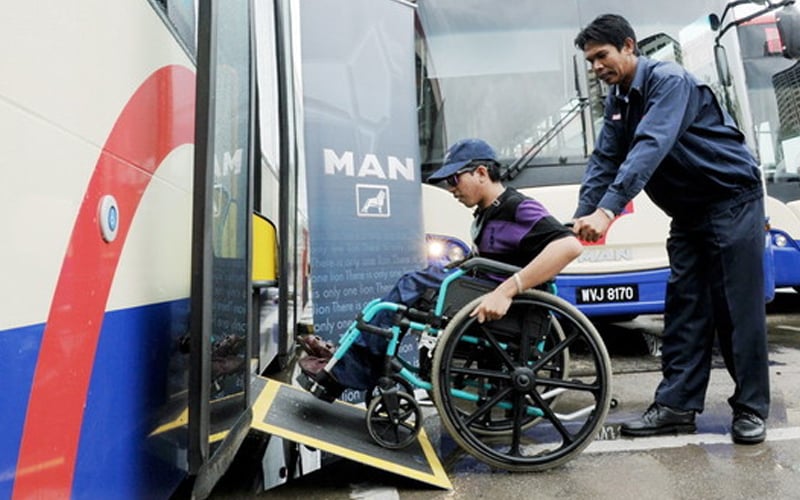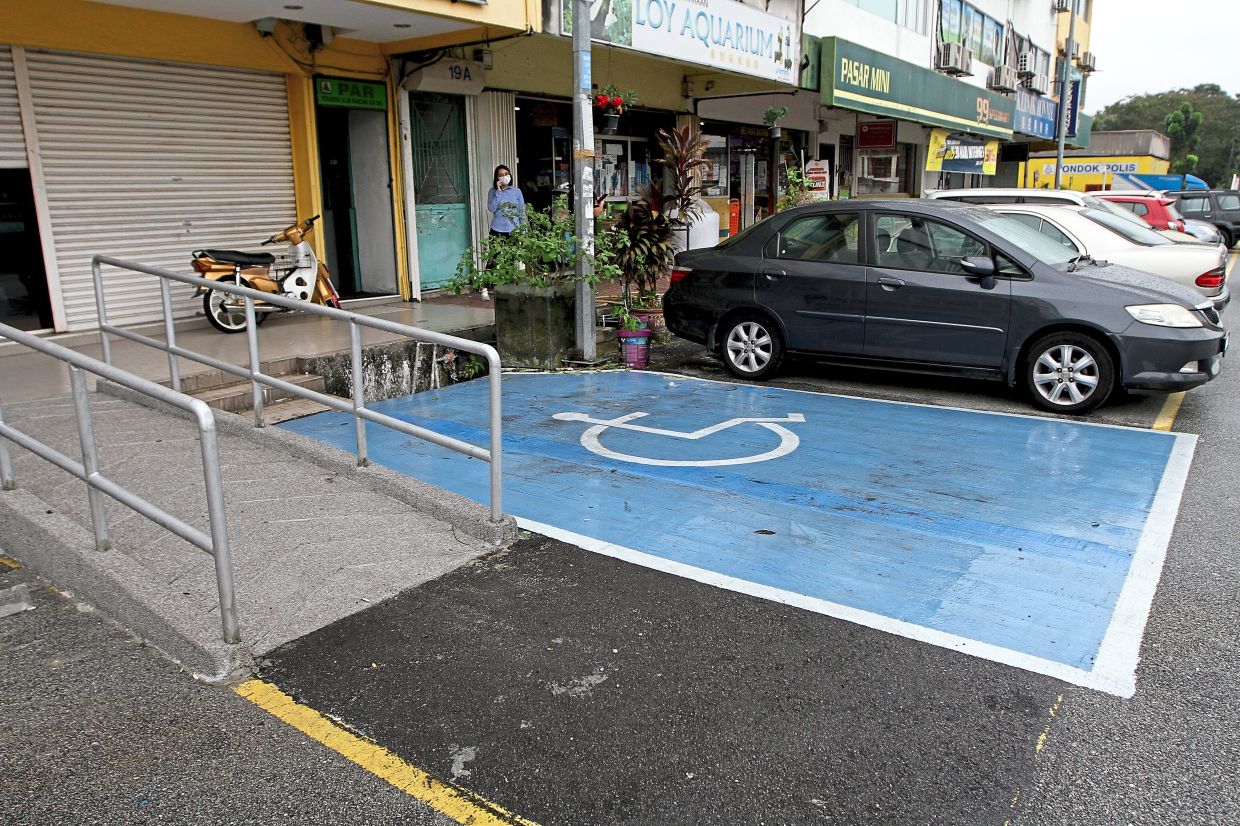Accessible Disability Facilities in South East Asia - Enhance Inclusion and Mobility

Enhance Inclusion and Mobility
Accessibility is critical for a society to be inclusive, especially for people with disabilities. According to a report by the World Health Organization, an estimated 15 percent of the world's population lives with a disability, which amounts to over one billion people. In South East Asia, accessibility has been a challenge for people with disabilities due to the lack of public disability facilities.
This article will examine the importance of enhancing inclusion and mobility for individuals with disabilities in South East Asia through the provision of public disability facilities. The article will also explore the differences in public disability facilities across South East Asia and highlight the progress made in countries like Singapore, Malaysia, Indonesia, the Philippines and Thailand.


Understanding the Differences in Public Disability Facilities
Public disability facilities in South East Asia vary significantly from country to country. Factors such as infrastructure, accessibility standards, and government initiatives play a crucial role in determining the quality and availability of these facilities across the region.
infrastructure
One of the main factors impacting the differences in public disability facilities is infrastructure. Countries with older infrastructure may struggle to retrofit existing buildings and public spaces with accessible features, resulting in limited accessibility for individuals with disabilities.
On the other hand, countries with newer infrastructure may have more accessible public areas and buildings. For example, Singapore is known for its highly accessible public transportation system and disability-friendly built environment.
Accessibility Standards
The level of accessibility standards adopted by governments also affects the quality of public disability facilities. Some countries may have lower requirements for accessibility, resulting in limited facilities and support for individuals with disabilities.
Other countries, such as Malaysia, have adopted accessibility standards and guidelines that prioritize the needs of individuals with disabilities. This has led to more inclusive public spaces and a greater range of accessible facilities.
Government Initiatives
The extent of government support and initiatives can also impact the availability and quality of public disability facilities. Some countries may have better funding and resources allocated to disability services, resulting in more comprehensive and accessible facilities.
For example, the Thai government has implemented various initiatives to improve accessibility, including the creation of wheelchair-accessible public transportation and the promotion of disability-friendly tourist destinations.
| Factors | Impact on Public Disability Facilities |
|---|---|
| Infrastructure | Older infrastructure may limit accessibility, while newer infrastructure may be more disability-friendly. |
| Accessibility Standards | Countries with higher accessibility standards may have more inclusive public spaces and facilities. |
| Government Initiatives | Countries with greater government support and resources may have more comprehensive and accessible facilities. |
Overall, the variations in public disability facilities in South East Asia are influenced by a range of factors. To improve accessibility and inclusion for individuals with disabilities across the region, it is important for governments and organizations to prioritize the development and maintenance of public disability facilities.
Maintaining Public Disability Facilities
Having public disability facilities is a significant step towards inclusion and accessibility. However, it is equally important to maintain these facilities regularly to ensure that they are functional, safe, and accessible at all times.
| Importance of Maintenance |
|---|
| Regular maintenance of public disability facilities keeps them in good condition and helps to prevent accidents and breakdowns. |
| It also ensures that the facilities remain accessible and usable for people with disabilities. |
| Proper maintenance can also help to extend the lifespan of the facilities, reducing the need for costly replacements. |
Maintenance should be conducted according to a regular schedule, with specific tasks assigned and carried out by trained personnel. It may involve cleaning, repairing, testing, and replacing parts, among other activities.
It is also important to have a system in place for reporting issues or malfunctions with public disability facilities. This can be in the form of a hotline, online portal, or on-site staff who can respond promptly to any concerns raised.
Overall, regular maintenance of public disability facilities is an integral part of ensuring accessibility, safety, and inclusivity for individuals with disabilities. It is crucial that governments and other stakeholders prioritize and invest in maintaining these facilities to create a more accessible and inclusive society for all.


Accessible Disability Facilities in Singapore
Singapore is widely regarded as one of the most accessible cities in the world, providing a wide range of public disability facilities to ensure accessibility and inclusivity for individuals with disabilities. Below are some of the accessible facilities available in Singapore.
| Accessible Facility | Description |
|---|---|
| Wheelchair Ramps | Most public buildings and transportation hubs in Singapore are equipped with wheelchair ramps for easy access. |
| Accessible Toilets | Public toilets with disability-friendly features, such as grab bars and lower sinks, are available across the island. |
| Tactile Paving | Tactile paving is installed along sidewalks and pedestrian crossings to assist individuals with visual impairments. |
| Audio Traffic Signals | Audio traffic signals are available at busy intersections to assist individuals with visual impairments to cross the road safely. |
In addition, the Ministry of Social and Family Development (MSF) has established the Enabling Village, a disability-friendly community space that offers a wide range of services and facilities, including coworking spaces, retail stores, and art galleries.


Accessible Disability Facilities in Malaysia
Malaysia has made significant progress in improving accessibility and inclusion for individuals with disabilities in recent years. The government has implemented various initiatives to ensure that public spaces and facilities are accessible to everyone.
Accessible Transportation
Most public transportation in Malaysia has wheelchair ramps and designated seating areas for individuals with disabilities. The government has also recently introduced a new accessible taxi service called "Teksi1Malaysia" which offers wheelchair-accessible vehicles.
Disability-Friendly Attractions
Many of Malaysia's popular tourist destinations have become more disability-friendly in recent years. The Kuala Lumpur Bird Park has wheelchair-accessible paths and ramps, and the Petronas Twin Towers has accessible parking, restrooms, and elevators. The Zoo Negara also offers wheelchair rental services.
Inclusive Public Spaces
The government has implemented guidelines for building accessible public spaces, including wheelchair ramps, tactile paving, and accessible restrooms. Many shopping malls in Malaysia also have dedicated parking spaces and elevators for individuals with disabilities.
| Accessible Disability Facilities in Malaysia | Description |
|---|---|
| Accessible Transportation | Public transportation with wheelchair ramps and designated seating areas and Teksi1Malaysia accessible taxi service |
| Disability-Friendly Attractions | Kuala Lumpur Bird Park, Petronas Twin Towers, and Zoo Negara with wheelchair-accessible paths and ramps, accessible parking, restrooms, and elevators |
| Inclusive Public Spaces | Public spaces with wheelchair ramps, tactile paving, and accessible restrooms. Many shopping malls have dedicated parking spaces and elevators for individuals with disabilities |
Overall, Malaysia has made significant strides in improving accessibility for individuals with disabilities, though there is still more work to be done to ensure full inclusion and equal access.
Accessible Disability Facilities in Indonesia
Indonesia has made significant progress in providing disability-friendly facilities in recent years. However, there are still many challenges to overcome to ensure full accessibility for individuals with disabilities.
Accessible Public Transportation
Efforts have been made to make public transportation more accessible in Indonesia, such as by implementing wheelchair-friendly ramps and designated spaces for individuals with disabilities. However, the availability and accessibility of such features vary greatly across regions and modes of transportation.
| Mode of Transportation | Accessibility Features |
|---|---|
| Transjakarta Bus | Wheelchair ramps and designated spaces for individuals with disabilities |
| Commuter Train | Designated spaces for individuals with disabilities and audible station announcements |
| Taxi and Ride-hailing Services | Some services offer wheelchair accessible vehicles |
Disability-Friendly Infrastructure
While Indonesia has made strides in providing accessibility features in public spaces, such as pedestrian walkways with tactile paving, there is still a lack of awareness and understanding among the public regarding the needs of individuals with disabilities. This can result in inaccessible sidewalks, buildings, and other public facilities.
Inclusive Tourism
Indonesia has taken steps to promote inclusive tourism by providing disability-friendly accommodations and attractions. However, this is still an area that requires further development and improvement.
| Disability-Friendly Attractions | Description |
|---|---|
| Bali Safari Marine Park | Provides accessible tours for individuals with disabilities |
| Bogor Botanical Gardens | Offers wheelchair-friendly paths and guided tours for individuals with disabilities |
Accessible Disability Facilities in the Philippines
The Philippines has made significant strides in providing accessible disability facilities in the country, particularly in urban areas such as Manila and Cebu City. Here are some of the key facilities available:
| Facility | Description |
|---|---|
| Accessible public buildings | Public buildings such as government offices and schools have installed ramps and elevators for wheelchair-users, as well as accessible restrooms. |
| Wheelchair-friendly sidewalks | The sidewalks in major cities have been upgraded to accommodate wheelchair-users, with smooth surfaces and curb-cuts for easy mobility. |
| Inclusive tourism initiatives | Hotels and tourist destinations have started implementing inclusive facilities such as wheelchair-accessible rooms and tours, as well as trained staff to assist visitors with disabilities. |
What is the situation like for people with visual impairments in the Philippines?
People with visual impairments in the Philippines still face some challenges when it comes to accessibility, particularly in public transportation and navigating public spaces. However, initiatives such as tactile paving and the installation of braille signage in public buildings have been implemented to improve accessibility for individuals with visual impairments.
Accessible Disability Facilities in Thailand
Thailand has made notable progress in enhancing accessibility for individuals with disabilities across the country. The Thai government has implemented numerous initiatives to create a more inclusive and accommodating environment for people with disabilities.
Wheelchair-Accessible Public Transportation
One of the significant advancements in Thailand is the availability of wheelchair-accessible public transportation. Most of the buses in Bangkok, the country's capital city, have been equipped with wheelchair ramps, which makes traveling more comfortable for people with mobility disabilities.
Disability-Friendly Tourist Destinations
Thailand has numerous tourist destinations that cater to individuals with disabilities. Some of the popular tourist spots, such as the Grand Palace and Wat Arun, have implemented measures to make these places more accessible to visitors with disabilities.
| Tourist Destinations | Accessibility Features |
|---|---|
| The Grand Palace | Wheelchair ramps and accessible tour routes |
| Wat Arun | Tactile paving and wheelchair-accessible paths |
Thailand has also launched the "Miracle of Thai" campaign, which aims to promote the country as a disability-friendly destination for tourists from around the world.
Challenges in Accessibility
While Thailand has made significant progress in creating a more accessible environment, some challenges still exist. For instance, many public buildings and infrastructures do not meet accessibility standards. This lack of accessibility can make it difficult for individuals with disabilities to access these facilities.
Moreover, some of the older tourist destinations in the country may not have implemented accessibility measures yet. This can limit the options for individuals with disabilities who wish to explore these places.
However, the Thai government has made it a priority to continue improving accessibility standards across the country to ensure that everyone has equal access to public facilities and services.


Public Disability Facilities in South East Asia - Conclusion
Accessible disability facilities are crucial for enhancing inclusion and mobility for individuals with disabilities across South East Asia. While there are variations in the quality and accessibility of public disability facilities across the region, it is important to prioritize and invest in maintaining these facilities to ensure their functionality and accessibility for people with disabilities.
Despite the challenges, progress has been made in providing accessible disability facilities in countries like Singapore, Malaysia, Indonesia, the Philippines, and Thailand. These advancements include wheelchair ramps, accessible toilets, tactile paving, disability-friendly attractions, inclusive public spaces, and wheelchair-accessible public transportation, among others.
It is important to continue working towards improving public disability facilities in South East Asia, as this will not only benefit individuals with disabilities but also society as a whole. By prioritizing accessibility and inclusivity, we can create a more equitable and just society for everyone.
FAQ about Public Disability Facilities
As accessibility becomes a more pressing issue in South East Asia, there are a number of questions surrounding public disability facilities. Here are some frequently asked questions and their answers:
1. What are public disability facilities?
Public disability facilities are amenities, equipment, and services designed to accommodate people with disabilities in public spaces. They may include wheelchair ramps, accessible toilets, tactile paving, and assistive technology.
2. Are public disability facilities necessary?
Yes, public disability facilities are necessary to ensure that individuals with disabilities have equal access and opportunities to participate in society, including in public spaces, transportation, and events.
3. Who is responsible for providing public disability facilities?
Governments are primarily responsible for providing and maintaining public disability facilities. However, private businesses and institutions may also have a role in providing accessible facilities for their customers or employees.
4. What are some challenges to providing public disability facilities in South East Asia?
Some common challenges include inadequate infrastructure, limited funding, and a lack of awareness or understanding about the needs of people with disabilities. Discrimination and social stigma towards people with disabilities can also hinder progress in this area.
5. How can individuals with disabilities advocate for better public disability facilities?
Individuals with disabilities can advocate for better public disability facilities by raising awareness about the issues they face, engaging with policymakers and community leaders, and highlighting successful models and solutions from other countries and regions. They can also join disability rights organizations and participate in campaigns and initiatives to promote accessibility and inclusion.
6. What can the general public do to support accessible public spaces?
The general public can help by promoting awareness about accessibility and disability rights, using and respecting accessible facilities when available, and advocating for more inclusive policies and practices in their communities and workplaces. They can also support disability rights organizations and initiatives.
Jul 13,2023
